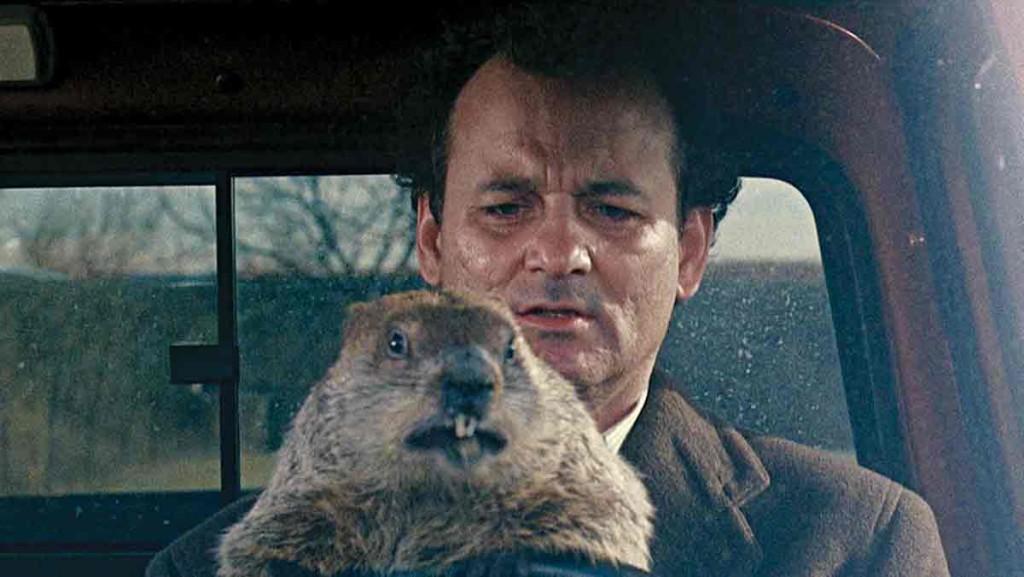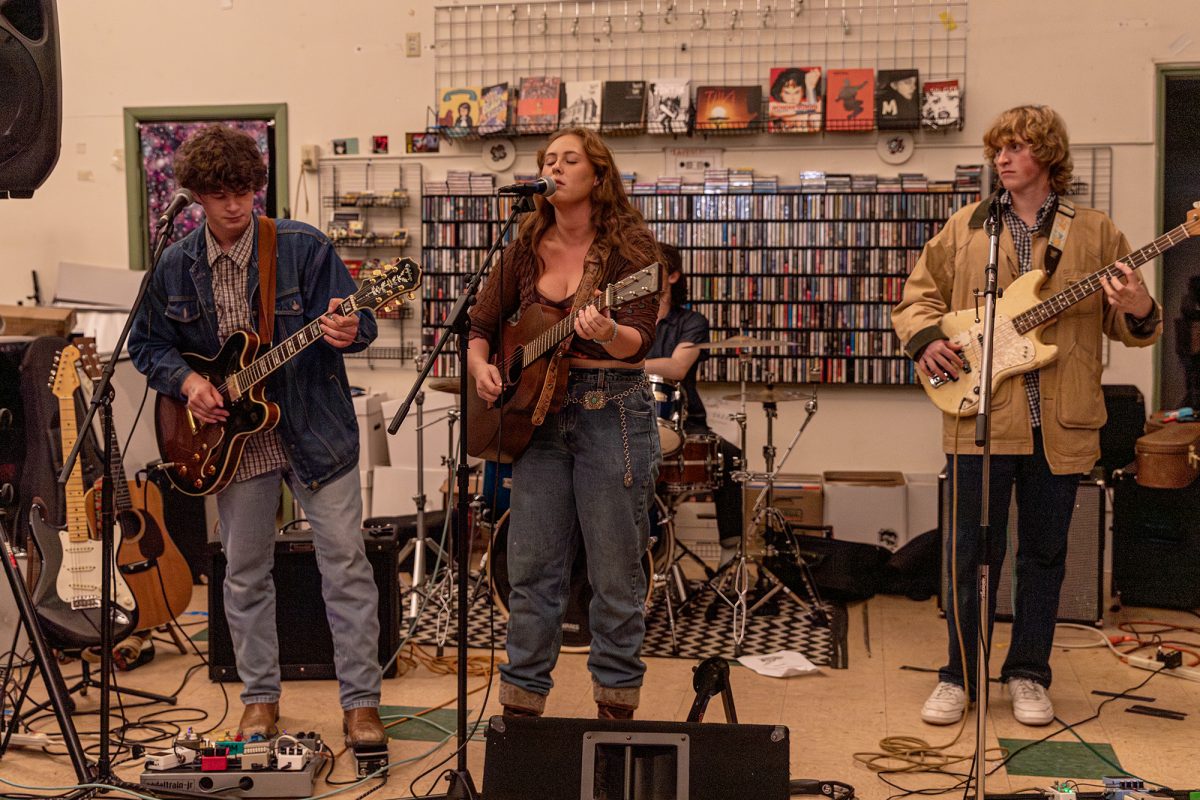For the hundreds of American films produced each year — and the thousands of films produced since the dawn of cinematography and filmmaking — only a select few can be considered worthy of preservation for their impact on society.
The National Film Registry, housed in the Library of Congress, was founded to do just this. Established through the National Film Preservation Act of 1988, the National Film Registry selects 25 films at the end of each year that showcase the “range and diversity of American film heritage to increase awareness for its preservation.” The registry’s website currently houses 650 film titles.
In recent years, nine Ithaca College professors from the Roy H. Park School of Communications have contributed essays to the National Film Registry on films ranging from American classics such as “Groundhog Day” to documentaries like “Why We Fight.” Staff Writers Justin Henry, Kalia Kornegay and Silas White interviewed these professors about their written contributions to the registry and why these movies are deserving of preservation in American film.
Matt Holtmeier
Matt Holtmeier, postdoctoral teaching fellow at the Park School, teaches Introduction to Film Aesthetics and Analysis, advises the course’s tutor team and teaches Hollywood and American Film. His professional research is chiefly concerned with the production of political subjectivity in film, or the “shift when one engages with the world or with one political problem.”
In Summer 2015, the National Film Registry asked Holtmeier to argue for several of its inducted films’ “cultural and historical significance.” Holtmeier chose the 1983 independent drama “El Norte” because it pertains to his study of the American dream in film and how it lets people down.
“The film follows two indigenous Guatemalans in three acts as they flee the military regime controlling their nation in the 1980s, traveling through Mexico, and finally arrive in Los Angeles, California with its promise of wealth,” according to his article.
Holtmeier argues in his article that “El Norte” is a landmark in American independent cinema for its authenticity of the journey of Latin American immigrants.
“It was telling the story of peripheral subjects — stories at the time in America we didn’t know,” Holtmeier said. “We knew people immigrated from Latin America. Perhaps people knew it was a fraught journey. People knew it was dangerous, but what we didn’t know, perhaps, was what that experience actually looked like.”
In his journal, he says “‘El Norte’ marks Nava and Thomas out as contemporaneous pioneers of independent film in the United States.” Holtmeier said the film is revered by critics as “the first independent epic” because of its significant role in the emerging American independent film culture.
“Independent film is the only way to provide us access to these experiences that we don’t get in mainstream film,” Holtmeier said. “The fact that this was an independent film made via PBS is testament to that fact.”
Patricia Zimmermann and Dale Hudson
Patricia Zimmermann teaches Introduction to Film Aesthetics and Analysis and History and Theory of Documentary at the Park School and co-directs the Finger Lakes Environmental Film Festival. In Fall 2015, the Library of Congress asked for her scholarly contributions to the National Film Registry for three of the film inductees: “A Study in Reds”; “Precious Images,” which she co-wrote with former Ithaca College professor Dale Hudson; and “Nanook of the North,” which she wrote with her son Sean Zimmermann Auyash.
Zimmermann is a historian and a theorist in screen studies and said her professional research is chiefly concerned with “documentary, amateur film practices, new media, historiography.” Because Zimmermann was a nominator in the 1990s for films to be inducted into the National Film Registry, much of Zimmermann’s professional work continues to be based in film archives.
“I’ve been working for three decades to expand the notion of ‘screen culture’ to ‘screen cultures,’ that it is heterogeneous and shows the enormous complexity of our cinematic heritage,” Zimmermann said.
Hudson, who is currently a New York University Abu Dhabi associate teaching professor of film and new media, researches film and new media through the postcolonial and transnational frameworks. During Spring 2015, he and Zimmermann decided to collaborate on writing the article based on their years of curating together for the Finger Lakes Environmental Film Festival.
Compiling several iconic Hollywood images together, “Precious Images” is a 1986 short film that commemorates the anniversary of the Director’s Guild of America in experimental ways. In the article, they wrote, “‘Precious Images’ defies categorization: it is simultaneously a trailer, commissioned film, advertisement, experimental film and compilation-film-as-documentary on Hollywood.” Hudson said the film is significant to archivists because it analyzes Hollywood’s rich heritage while also anthologizing it.
According to their article, “Workman salutes Hollywood through editing strategies derived outside the studio system’s classical continuity style. He deploys tour de force cumulative montage with experimental editing strategies emphasizing visuality over story, transforming studio narratives into archival materials.”
Chelsea Wessels
Ithaca College Lecturer Chelsea Wessels’ essay was on the 1971 western drama “McCabe & Mrs. Miller.” The film is about prostitute Constance Miller’s (Julie Christie) and gambler John McCabe’s (Warren Beatty) joining forces as business partners in the Old West. In Wessels’ essay, she said the film is often referred to as “anti-western” due to how it includes elements not typically associated with Western movies at the time, such as feminism and civil rights.
Wessels said in an email she primarily researches films in the Western genre. When she was invited to contribute an essay, she said it allowed her to concentrate her research on “McCabe & Mrs. Miller.” The short, two-page format of the essays made it easier for her to get started on the process.
“When I was asked to contribute an expanded essay, my choices were some of the Westerns that had not yet been covered,” she said. “I chose ‘McCabe & Mrs. Miller’ because it’s always been a film I’ve been interested in writing about but hadn’t found the time yet.”
Having graduated from the University of St. Andrews in 2014, Wessels now works at the college and as a visiting lecturer at Cornell University. On the National Film Registry website, Wessels describes her research as decentering “the Western genre as an American form, pointing out the interrelation of national and global factors that have led to the emergence and the adoption of the western as a political and popular genre.”
She said having the essays available online through the Library of Congress makes it easier for a wide audience to be exposed to them.
“One thing that is wonderful about the NLC is the accessibility of the pieces,” she said. “Not only are they freely available online, but they are concise approaches to the film. So this work is appealing to a broader audience — my dad even read it.”
Stephen Tropiano
Stephen Tropiano, founding director of the Ithaca College Los Angeles program, was invited to submit an essay by Patricia Zimmermann, who is also involved in the selection committee. He wrote his piece on the film “Cabaret,” a film made in 1972 based on the Broadway musical. After writing a book on the film, “Cabaret: Music on Film,” in 2011, he said writing the essay came easy for him.
He said the committee let them write about any topic, so long as it was only about the assigned film. The essay proceeds to discuss the background information on the film as well as how it was a stage-to-film adaptations in Hollywood. He also detailed the critical success of the film in the way of eight Academy Awards and lead actress Liza Minnelli’s earning an Oscar for her role.
“Part of it was mapping out what I wanted to say,” Tropiano said. “I realized the context for this is that it’s the National Film Registry. For anybody clicking on this, I wanted to make sure they got a good overview about the film in terms of its background. So the challenging part was picking and choosing what to include, especially when you’ve written a book on the entire thing.”
According to Tropiano, the high number of Park School–professor contributors is the result of their being well-versed in the field of screen studies. He said each of the professors specializes in different genres of film, which made them qualified to participate.
“It’s a really rewarding experience because you feel like you’re contributing to a piece of film history,” he said. “It is a sort of untapped resource, which is why it felt so great to contribute to it.”
Tom Bohn
After writing his dissertation on the film “Why We Fight” in 1977, Tom Bohn, lecturer in the Park School, filed his research away in the form of a 400-page book. Recently he was invited by the Library of Congress to submit an essay based on his work.
“Why We Fight” is a series of seven documentary films directed by Frank Capra between 1942 and 1945. They were commissioned by the United States government as propaganda for drafted soldiers entering the war. Bohn said he chose to write about the series because of his interest in World War II combined with the film’s then-unusual compilation format. Capra was also a key figure who stuck out to Bohn due to how he was known for his fictional films such as “It’s a Wonderful Life” and “It Happened One Night.” Bohn said the government chose Capra to make the films because of his relatability with the American public through the family-friendly movies.
“I was in a film history class, and they introduced the ‘Why We Fight’ series,” Bohn said. “I had always been interested in World War II films and persuasion and propaganda. It was kind of a combination of the persuasion and propaganda, motif, compilation format, which was relatively unusual, and my interest in the war. I picked it, ran with it, and the rest is history.”
The biggest challenge was going through his book and condensing many of his original thoughts, he said. Although the book was published in 1977, Bohn began the research on his dissertation in 1968. Nearly 50 years have gone by since he initially involved himself with the series, but he said rediscovering what drew him to the films was a process he enjoyed.
“It wasn’t just taking what’s here verbatim,” he said. “I had to rework the language and rework the point of view. I loved the process. I found it very creative and very interesting to do. It was a fresh look at the series after almost 50 years, and it was a fun project to do.”
Steven Ginsberg
Steven Ginsberg is the Pendleton Endowed Chair of Ithaca College’s JB Pendleton Center in Los Angeles. He’s worked as a screenwriter and film critic and teaches classes on screenwriting, media industries and more.
Ginsberg’s essay on the movie “Groundhog Day” examines the movie’s place in pop culture as well as the strategies the film employed to reach such a large audience. Ginsberg said he was contacted by the National Film Registry after the members had read some of his work and requested he write an essay on “Groundhog Day.”
“I was really excited that was the film they had assigned me to because it’s a film I always really liked, and I hadn’t seen it in a long time, so it gave me an excuse to watch it once more,” he said. “It was really encouraging to know I liked it the same if not more than when I watched it the first time.”
At the time of its release, Ginsberg argues in his essay, the film’s progressive nature was partly responsible for its success.
“At that moment it was the world of the early nineties, prior to when Bill Clinton was elected president, and as it turned out ‘Groundhog Day’s’ progressive attitude favoring man’s search for love, kindness and do-gooding rather than espousing the more eighties mantra of ‘greed is good’ was both prophetic and perfectly timed to its release in 1993,” he wrote.
Its lasting impact, however, comes from its continuing impact on filmmakers.
“It is not insignificant to note that ‘Groundhog Day’ ushered in a slightly more absurdist, philosophical view of the world in mainstream Hollywood studio films and is often cited as one the (sic) few contemporary comedies this current generation of writers and directors claim they aspired to create,” he wrote.
Andrew Utterson
Andrew Utterson is an assistant professor of screen studies in the Park School. He teaches Contemporary European Cinema, Fiction Film Theory, Hollywood and American Film, and Introduction to Film Aesthetics and Analysis. The essay he contributed to the National Film Registry is on the short film “A Computer Animated Hand,” a film made in 1972 that Utterson called “an early landmark in the development of computer animation” in his essay.
“‘A Computer Animated Hand’ is a historically significant film that I think often gets overlooked, in part because of how old it is from a contemporary perspective, but also because it was produced well outside Hollywood,” he said.
Utterson argues in his essay that, though a simple film in nature, “A Computer Animated Hand” provided the foundation for modern CGI.
“This short film of a single hand would become the starting point and inspiration for countless CGI representations of the human form and other objects, now limited less by technology than by the imagination,” according to his essay.
Utterson studies film’s cultural and historical significance to society, but more specifically the impact of computer technology on filmmaking. His book “From IBM to MGM: Cinema at the Dawn of the Digital Age,” explores in more detail the relationship and impact of computers on filmmaking.
“I’ve always been fascinated at how computers came to occupy such a prominent role in society, but more particularly for us in the world of film studies, how the computer became a central tool for filmmaking,” he said. “‘A Computer Animated Hand’ is right at the vanguard of developments in computer animation, so it’s a historically significant film.”
Claudia Pederson
Claudia Costa Pederson lectures and writes on modern and contemporary art, with a focus on technology, media theory and social practice. She formerly taught film at the Park School and is the assistant curator of new media for the Finger Lakes Environmental Film Festival at the college. She currently teaches Introduction to Visual and Material Culture, Trends in Contemporary Art, and Theories of Art History and Culture at Wichita State University. Pederson’s essay is on “Study of a River,” a 16-minute black-and-white silent film that depicts the winter landscape of the Hudson River in 27 static shots. The film was created by Peter Hutton.
“Hutton’s film is significant because it works between and around historical visualities,” her essay read. “The film highlights the role of mimesis to inquire about the relationship between the politics of documenting nature and national and Euro-American identity formation.”
Through its silence, the film forces the viewer to focus entirely on its aesthetic.
“The absence of sound further reinforces the spatial focus of ‘Study of a River,’ an allusion to landscape painting as well as meditation,” she wrote.
Pederson’s most recent project, “Art for Spooks,” is a collaboration with media artist Nicholas Adrian Knouf that focuses on the theme of surveillance. Currently, the book can be viewed at the Davis Museum at Wellesley College in Massachusetts.
Pederson was unable to be reached to comment.














